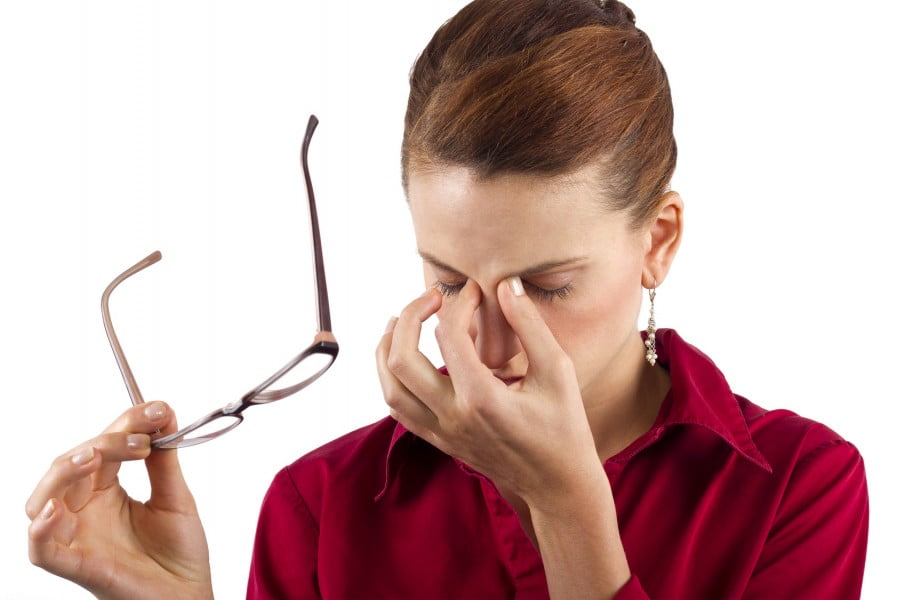
7 Best Ways to Reduce Computer Eyestrain
Many office workers spend the majority of the day in office cubicles staring at computer screens, tablets and phones. These electronics no doubt make us more productive, but the bad news is that too much screen time can also lead to something called computer vision syndrome (CVS). Recognizable as that tired, strained feeling your eyes get after a day in front of a computer screen, CVS affects some 64% to 90% of office workers. If you suffer from continuous tired eyes, here are 7 best ways to reduce computer eyestrain.
Lighting: The room where you use your computer or tablet should have the right balance of light. Too much direct light reduces screen contrast, making it more difficult to read text. Try this – cup your hands over your eyes like a baseball cap. If your eyes immediately feel better, then the lighting needs to be changed. When possible, opt for more natural light than florescent.
Glare: Avoid aiming an office desk lamp directly at the computer screen or device to eliminate glare, as this will create an unpleasant reflection. Stark white walls can also cause a distracting reflection. If practical, paint walls a darker color with a matte finish.
Eyeglasses: Eyeglass wearers can have lenses treated with an anti-reflective coating to decrease the amount of light reflecting off the front and back surfaces of lenses. There are even computer glasses available that are specifically designed to cut glare.
Screen settings: Use system or monitor settings to adjust brightness, contrast and text size. For most, the ideal combination is black text on a white background in type large enough to avoid squinting or leaning in to read, typically twelve to fourteen point fonts.
Blink: Take time to blink. Computer users naturally blink less when looking at a screen and that’s part of the problem. Blinking moistens the eyes to reduce dryness and irritation.
Take breaks: Make a conscious effort to take four to six breaks every hour or two. For five minutes stand up, stretch, relax the neck and focus on a distant object to give eyes a rest.
Posture: Slouching in a desk chair affects where the eyes hit the screen. Sitting up straight at a desk in an ergonomic office chair with both feet flat on the floor is the ideal. The screen should be a comfortable 20-24 inches from the eyes, or approximately the length from your middle knuckle to the elbow.
Finally, make conscious effort to limit your screen time when you are not at work. It’s hard to let go of our technology, but it’s important to give your eyes a rest. Get up, go outside and take a walk. Your eyes will thank you.

John Ofield is a recognized expert in the office furniture and office cubicle industry, with over 40 years of experience. As the founder of ROSI Office Systems, he specializes in space planning, custom cubicle designs, and high-quality commercial furniture. John’s expertise helps businesses enhance productivity and collaboration. He is also dedicated to mentoring entrepreneurs and redefining workspaces to inspire success.


